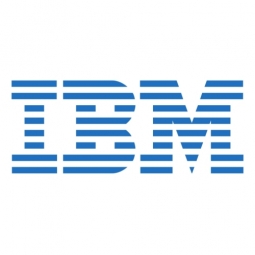A government agency in Asia-Pacific implements Cúram software to improve information and reporting systems and deliver higher quality services for individuals with disabilities

Customer Company Size
Large Corporate
Region
- Asia
Product
- IBM Cúram Social Program Management Platform
- IBM Cúram Financial Management
- IBM Cúram Provider Management
Implementation Scale
- Enterprise-wide Deployment
Impact Metrics
- Customer Satisfaction
- Productivity Improvements
Technology Category
- Functional Applications - Enterprise Resource Planning Systems (ERP)
Applicable Industries
- Cities & Municipalities
Applicable Functions
- Human Resources
Use Cases
- Remote Asset Management
Services
- System Integration
About The Customer
The customer is a state government agency in the Asia Pacific region. This agency provides services and support for nearly 18,500 disabled people and their families. The agency operates across 130 sites and is committed to improving service levels and ensuring more effective funding. The agency had launched a transformation project with the aim of improving its services. However, the existing information system was not capable of automatically sharing information across all sites, making it difficult for staff members to serve clients effectively. Clients were required to fill out multiple applications and undergo multiple assessments to determine their eligibility for various programs.
The Challenge
A state government agency in Asia Pacific provides services and supports for nearly 18,500 disabled people and their families. The department launched a transformation project aimed at improving service levels and ensuring more effective funding. The existing information system could not automatically share information across the department’s 130 sites, which made it difficult for staff members to serve clients. Clients were required to fill out multiple applications and undergo multiple assessments to determine eligibility across programs. Matching individual needs with available services was difficult without real-time information and automated rules-based processes.
The Solution
The organization implemented IBM Cúram software to establish a more transparent, easier-to-access business-information system that will help facilitate higher quality services for people with disabilities. For individuals, the solution provides a single point of contact for personalized and simplified intake. The Cúram rule sets help to apply standardized eligibility and decisions for individuals across the state. For suppliers, the solution offers a comprehensive, easy-to-use server catalog and more efficient payment administration. It provides the department with more equitable use of its available funding, improved information and reporting systems and a better overall capacity to plan and prioritize.
Operational Impact

Case Study missing?
Start adding your own!
Register with your work email and create a new case study profile for your business.
Related Case Studies.

Case Study
Turning A Stadium Into A Smart Building
Honeywell created what it called the “intelligent system” for the National Stadium in Beijing, China, turning the venue for the opening and closing events at the 2008 Summer Olympics into a “smart building.” Designed by highly controversial artist Ai Weiwei, the “Bird’s Nest” remains one of the most impressive feats of stadium architecture in the world. The 250,000 square meter structure housed more than 100,000 athletes and spectators at a time. To accommodate such capacity, China turned to Honeywell’s EBI Integrated Building Management System to create an integrated “intelligent system” for improved building security, safety and energy efficiency.
.png)
Case Study
Smart Street Light Network (Copenhagen)
Key stakeholders are taking a comprehensive approach to rethinking smart city innovation. City leaders have collaborated through partnerships involving government, research institutions and solution providers. The Copenhagen Solutions Lab is one of the leading organizations at the forefront of this movement. By bringing together manufacturers with municipal buyers, the Copenhagen Solutions Lab has catalyzed the development and deployment of next-generation smart city innovations. Copenhagen is leveraging this unique approach to accelerate the implementation of smart city solutions. One of the primary focus areas is LED street lighting.

Case Study
Buoy Status Monitoring with LoRa
The Netherlands are well-known for their inland waterways, canals, sluices and of course port activities. The Dutch Ministry of Infrastructure indicates that there are thousands of buoys and fixed items in and near water environments that would profit from IoT monitoring. One of the problems with buoys for example, is that they get hit by ships and the anchor cable breaks. Without connectivity, it takes quite some time to find out that something has happened with that buoy. Not to mention the costs of renting a boat to go to the buoy to fix it. Another important issue, is that there is no real-time monitoring of the buoys at this moment. Only by physically visiting the object on the water, one gains insight in its status.

Case Study
Barcelona Case Study
Barcelona’s heavy traffic and its associated high levels of pollution were the primary factors that motivated some companies and universities to work on strategies for improving traffic in the city centre. Bitcarrier is one of the technologies involved in the In4Mo Project, whose main objective is to develop the applications that form the core of smart mobility, one of the fundamental pillars of the smart city concept.

Case Study
China Mobile Smart Parking
Smart Parking, powered by NB-IoT technology, is making it easier for drivers to find free parking spots. Cities can better manage their parking assets and maximize the revenue available to them as a result. Drivers searching for parking create congestion and pollution by circling and hunting for available parking. Smart Parking services are able to significantly ease these problems by guiding a driver directly to a parking space.







